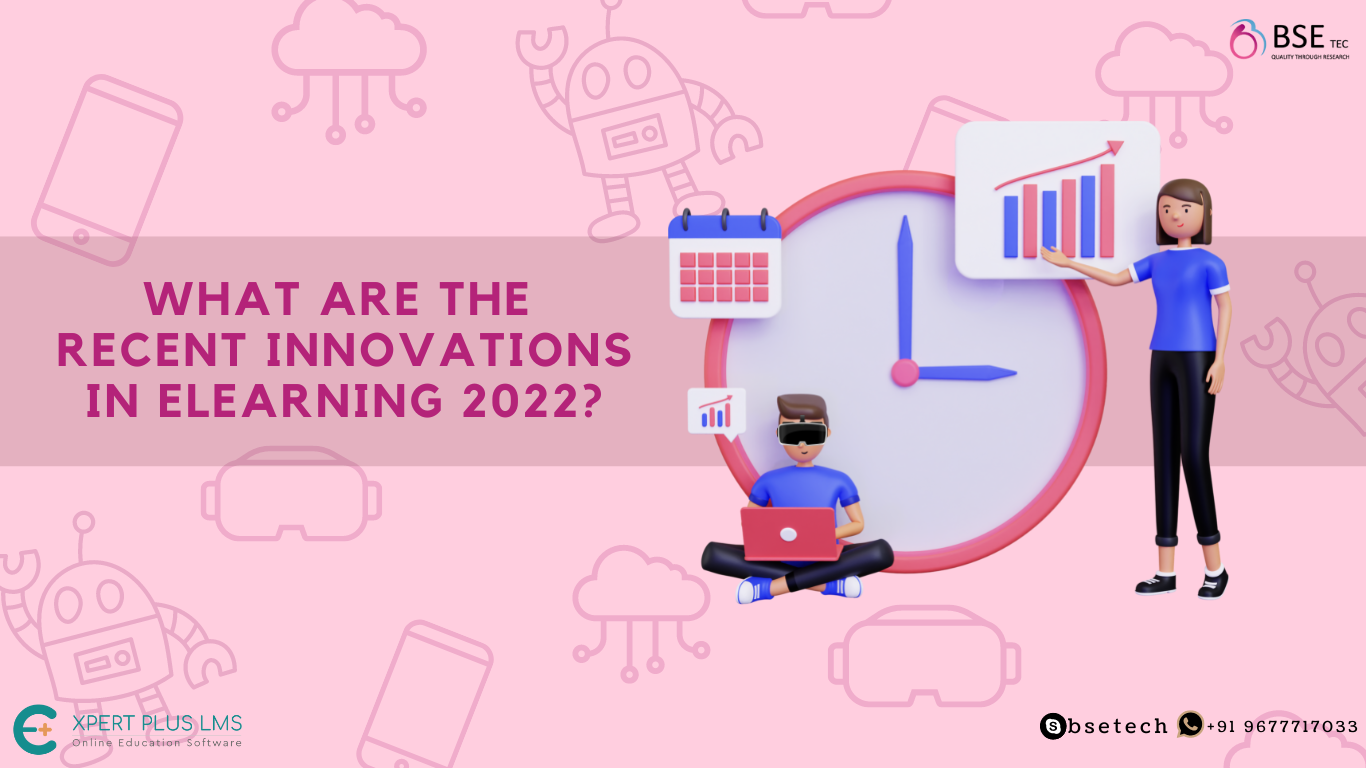What are the recent innovations in eLearning 2022?
eLearning isn’t about imparting education online anymore, it is much more than that. Learning management systems (LMS) and other eLearning platforms are now so smart that they help schools to determine the at-risk students who need additional support, and help universities to identify and select the right students. Above all, they provide forecasts about admissions, student enrollments, and predict outcomes, and ensure students’ success by tracking their records. But the recent innovations are here to revolutionize the education industry further in unimaginable ways. Some of the recent innovations and trends in the eLearning sector are,
- Technology-led innovations: Although eLearning and Learning management systems are a result of the growing technology, the advancements in Artificial intelligence and machine learning have impacted online education big time. Gone are those days of browsing through google for study materials, research papers, and class notes.
- Robots: Artificial intelligence and robots are not in Sci-Fi movies anymore. For example the robot, Sophia, the world’s first robot citizen and the first robot Innovation Ambassador for the United Nations Development Programme, Honda’s E2-DR disaster relief robot, and Sony’s Aibo robot dog. But artificial intelligence is ubiquitous and helps with learning too. Educational Robots are developed to help students learn cognitive skills of mathematical thinking for children. AI-enabled teaching assistants help to increase teachers’ efficiency.
- Artificial intelligence and Machine Learning: Artificial Intelligence and Machine learning is transforming education and fundamentally help us in learning, teaching and research. AI-powered LMS and online education platforms curate a more personalized learning experience based on the previous courses. It learns what topics you like, what you are skilled at, and the topics you struggle with. This helps educators use machine learning to spot struggling students and provide additional learning support. With natural language processing learning languages is easy as ABC. It also helps in targeting a global audience as it provides transcriptions and translations. Other features like text-to-speech and speech-to-text help to provide assistive technologies to special children with disabilities.
- Virtual Reality: Virtual reality(VR) takes visual learning to next level. For example, If you are about to teach about planets, you need not take them to planetariums. With the help of virtual reality, you can make the students to experiences the sun and solar system without leaving the class. VR enhances students learning by making them interact with their lessons. VR helps students with a deep understanding of more complex topics apart from providing technical education and special training in low-cost and low-risk learning environments.
- Mobile learning: Mobile learning or simply mLearning is the most under-explored territory as of now. But with 12GB of data per user, India has the highest rate of mobile data consumption in the world, mobile learning is going to be tremendous. Affording PCs, Laptops, and Tablets is a big challenge for single-income families in most developing economies. Most LMS does not offer mobile-friendly options. But in 2022, mLearning is going to be huge as many LMS developers are working to launch their LMS on mobile platforms after the global shutdown of schools due to the uncanny virus and pandemic which led to a demand for learning from home with smartphones.
- Microlearning: Apart from K-12 classes and learning new skills, professionals also opt for eLearning platforms to upskill or reskill in order to have career advancements. Even many corporates are opting for Learning management systems for the professional training platforms. Microlearning is the method of learning lessons in small chunks. Usually, the lessons in microlearning are under ten minutes, and for the majority of the time, it is under 2 minutes. Microlearning is based on the Forgetting Curve, or the Ebbinghaus Curve of Forgetting, which means we lose almost 80% of the information learned. When we learn large chunks of information we cant retain many things, but with microlearning learning shorter lessons and contently recalling them help with retaining information and productivity.
Microlearning can be used in the on-the-job training of employees since it doesn’t take much time to learn, this can be easily implemented and learned without disturbing other productive things.
These are the recent innovation in eLearning platforms in the year 2022. Hope this article gives you an insight on what are the new trends you have to implement in your eLearning platform to outgrow your competitors. If you are a tutor planning to launch your own tutoring platform for online classes or looking for ways to incorporate AI into your LMS platform, checkout ExpertPlus LMS, the most efficient and top-notch udemy clone script to launch your eLearning platform seamlessly. Contact BSEtec for more details and a free demo.





